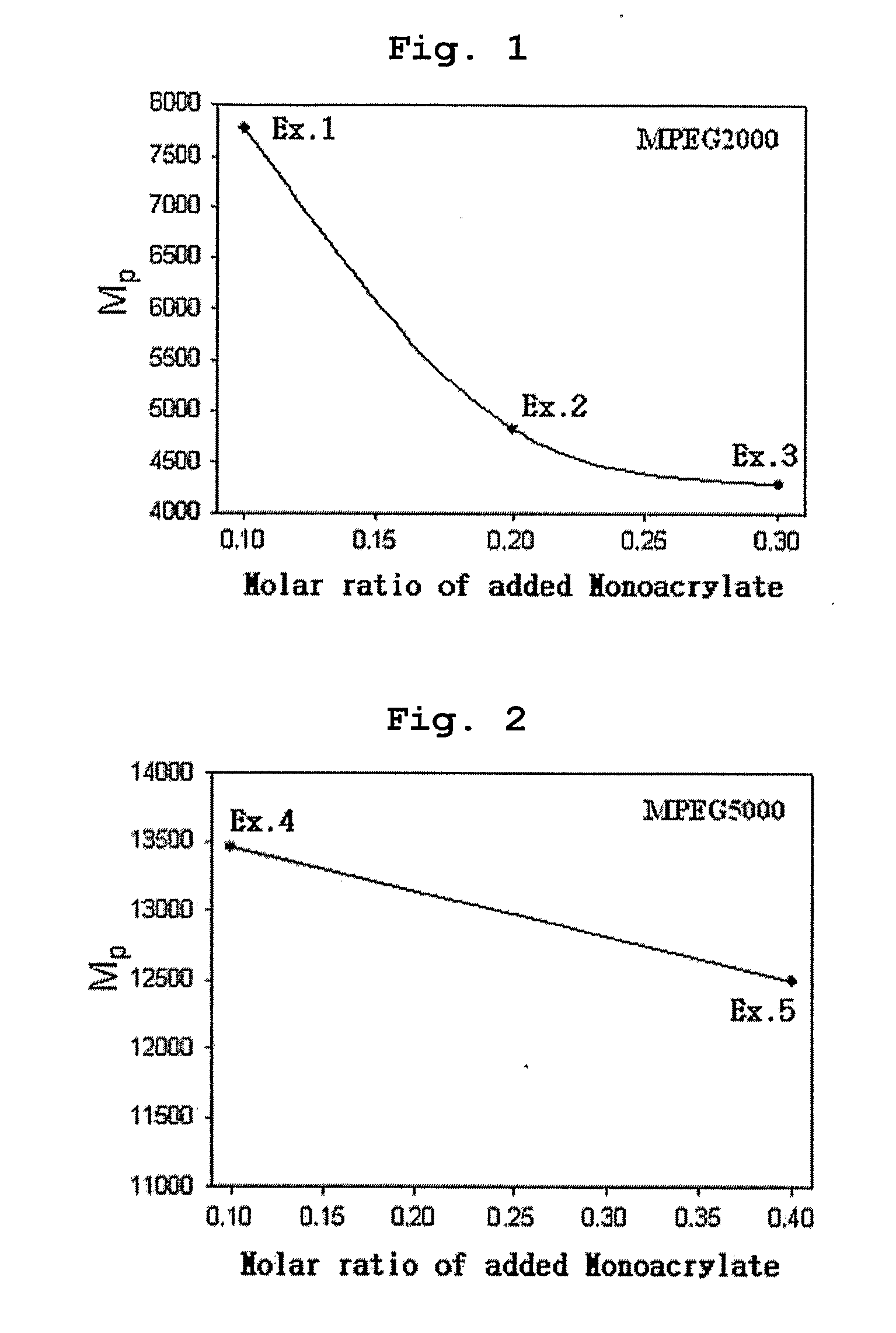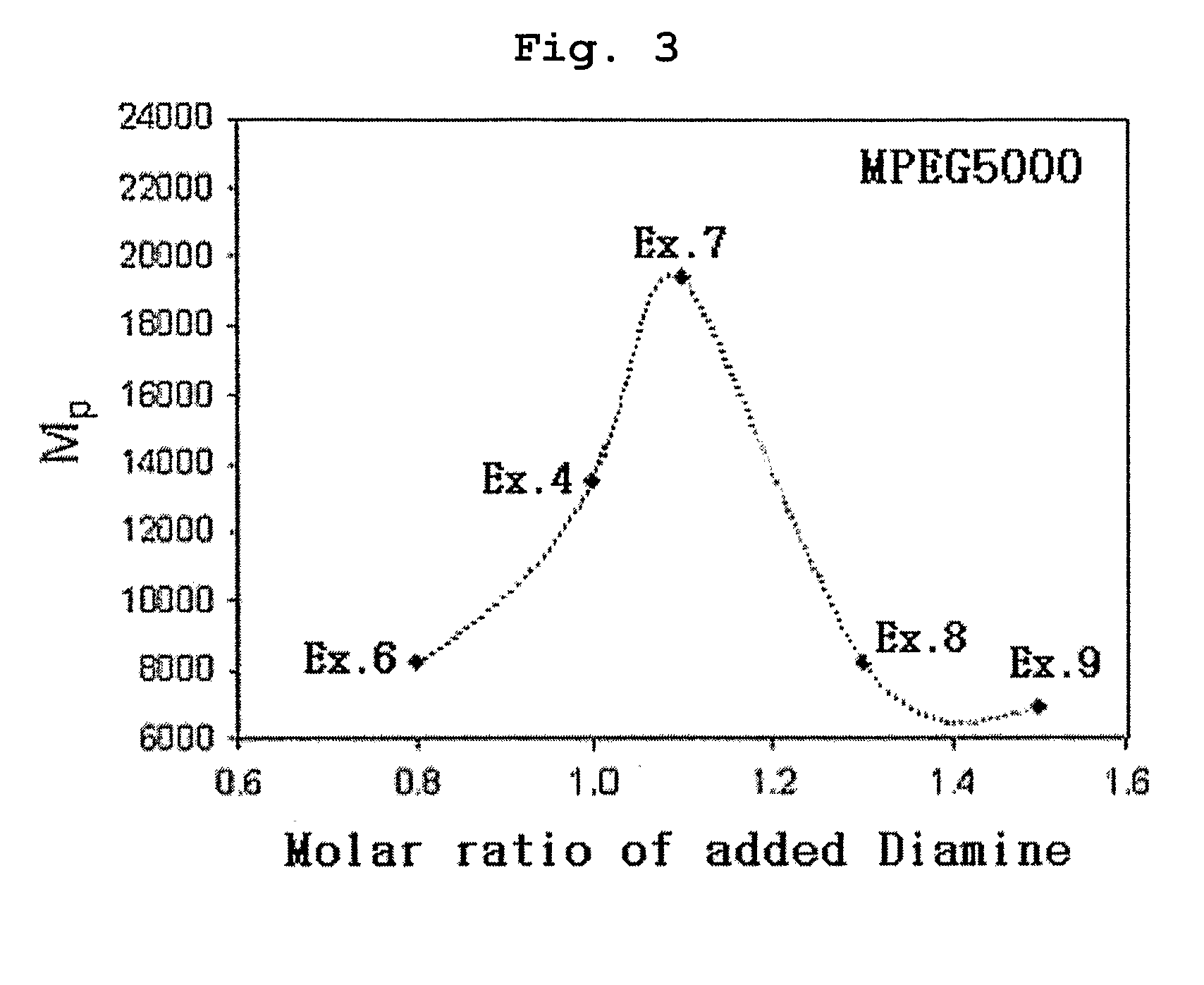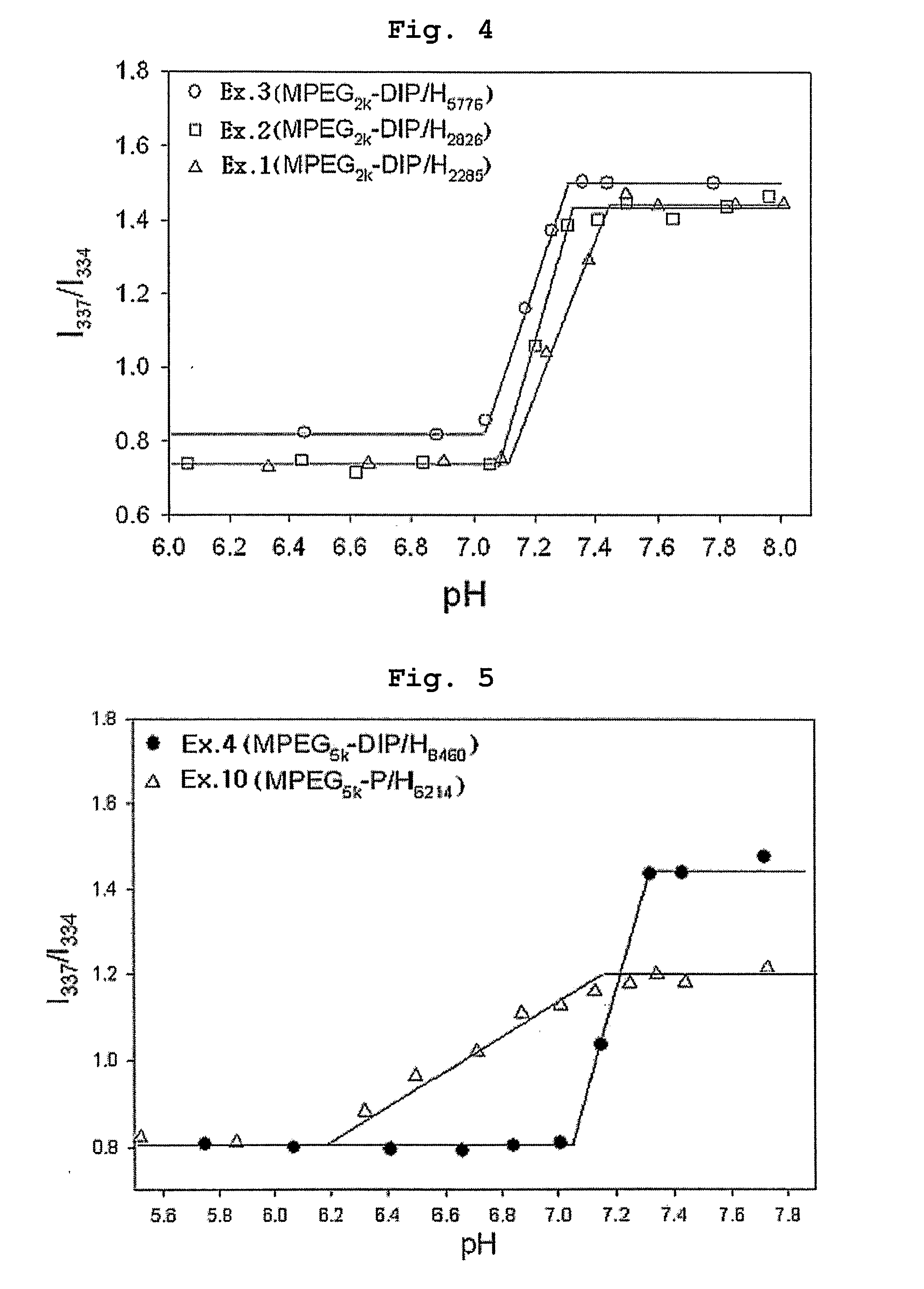Ph Sensitive Block Copolymer and Polymeric Micelle Using the Same
- Summary
- Abstract
- Description
- Claims
- Application Information
AI Technical Summary
Benefits of technology
Problems solved by technology
Method used
Image
Examples
example 1
Preparation of Polyethylene glycol-Poly(β-amino ester) Block Copolymer (PAE)
[0070] Polyethylene glycol methyl ether (MPEG2000, Mn=2000) and acryloyl chloride were reacted in the presence of methylene chloride containing triethyl amine (TEA) added thereto. Then, the reaction mixture was extracted with diluted aqueous hydrochloric acid solution and was precipitated with n-hexane to obtain polyethylene glycol methyl ether acrylate (MPEG2000-A, Mn=2000) as precipitate. 0.1 moles of MPEG2000-A was introduced into a two-necked round bottom flask along with 1 mole of 4,4′-trimethylene dipiperidine (as diamine component) and 1 mole of 1,6-hexanediol diacrylate. Next, the reaction flask was depressurized and purged with nitrogen.
[0071] Chloroform was used as the reaction solvent and the reaction was carried out at 50° C. for 48 hours to obtain polyethylene glycol-poly(β-amino ester) block copolymer (MPEGA-PAE) having a molecular weight (Mp) of 7700.
example 2
[0072] Example 1 was repeated to obtain MPEGA-PAE block copolymer having a molecular weight (Mp) of 4800, except that polyethylene glycol methyl ether acrylate MPEG2000-A) was used in an amount of 0.2 moles instead of 0.1 moles.
PUM
| Property | Measurement | Unit |
|---|---|---|
| Diameter | aaaaa | aaaaa |
| Acidity | aaaaa | aaaaa |
| Molecular weight | aaaaa | aaaaa |
Abstract
Description
Claims
Application Information
 Login to View More
Login to View More - R&D
- Intellectual Property
- Life Sciences
- Materials
- Tech Scout
- Unparalleled Data Quality
- Higher Quality Content
- 60% Fewer Hallucinations
Browse by: Latest US Patents, China's latest patents, Technical Efficacy Thesaurus, Application Domain, Technology Topic, Popular Technical Reports.
© 2025 PatSnap. All rights reserved.Legal|Privacy policy|Modern Slavery Act Transparency Statement|Sitemap|About US| Contact US: help@patsnap.com



